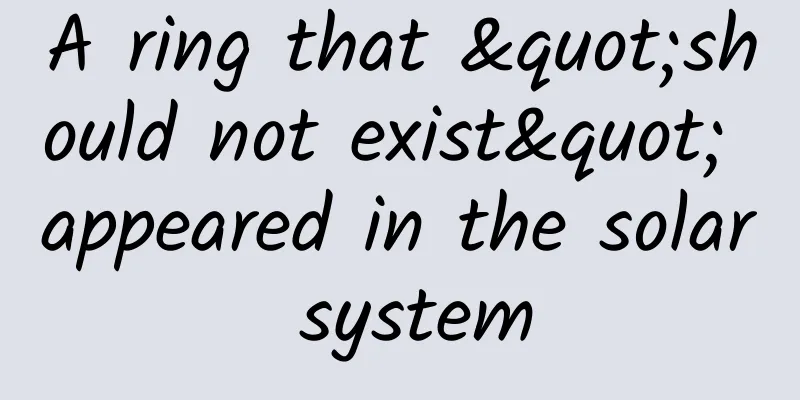A new "habitable planet" has been discovered? It's 4 times bigger than Earth, and has only 11 days in a year...

|
Are we alone in space? This question has troubled mankind for many years, and even today, scientists still cannot give an accurate answer through systematic scientific knowledge. Despite this, humans have not given up the search for exoplanets. We want to search for traces of the possible existence of other civilizations. Secondly, for humans, if we can find a second "Earth", it may help us solve future survival problems. No matter from which perspective, finding a suitable habitable planet is of extraordinary significance to human beings. It is not only reflected in the heavy responsibility shouldered by scientists, but also in the large number of enthusiasts among the public who will use all the means around them to explore possibilities. A large number of studies on the exploration of exoplanets have shown that exoplanet researchers have brought new news: a habitable planet that is four times the size of the Earth is only 37 light-years away from us. The planet was observed using the Subaru Strategic Program, established by Japan in 2007, and the Subaru Telescope. The newly discovered planet is named Ross 508b. It is a super large rocky planet located in the habitable zone. Therefore, scientists believe that liquid water should be preserved in Ross 508b, which may be the basis for the existence of life. On the other hand, further observations show that the main star in the star system where Ross 508b is located is an M-type star. If it only takes 10.8 days to revolve around the star, it should be close to 11 days. In other words, here the year is like a day, with only 11 days in a year. This means that the planet orbiting Ross 508b is not very large, and its host star, as a red dwarf, is much smaller than the Sun. Therefore, in relatively smaller celestial bodies, the gravitational field between celestial bodies will not be as vast as in the solar system. Considering that Ross 508b is only 5 million kilometers away from its M-type host star, in comparison, even Mercury is 60 million kilometers away from the sun. So it is not difficult for us to see why the status of Ross 508b is like this. So the key question is, how was such a strange planet determined to be in the habitable zone? Orbitally, Ross 508b's orbit is elliptical, meaning it's never very close to its star at all times, and it's tilted almost up and down in the habitable zone. In addition, because the planet itself is large enough, the planet can rely on its own gravity system to retain water. Of course, not every celestial body in a red dwarf is as lucky as Ross 508b. In fact, three-quarters of the stars in the Milky Way are smaller than the Sun, and are abundant around the Solar System. Therefore, the search for habitable target objects will naturally be done in red dwarf systems. The discovery of such nearby exoplanets, along with detailed observations of their atmospheres and surfaces, could help scientists understand whether life could exist in environments different from those in our solar system. Importance of the habitable zone However, it is not easy to search for habitable planets in red dwarf systems because the surface temperature of red dwarfs is less than 4000 degrees, which makes their visible light very weak. Scientists have previously discovered several planets while searching for red dwarf stars near the solar system. For example, Proxima b, the closest star to the Sun, is part of a triple star system located in the Alpha Centauri system. However, the surface temperature of this star is less than 3000 degrees, making it a late red dwarf. It was quite difficult for scientists to search for it in the early days, requiring spectral analysis and Doppler analysis. Later, scientists used the transit method to search for this type of red dwarf stars, which became more reliable. In order to solve the problem of spectral observation of red dwarfs, astronomy now uses higher precision spectrometers to search the infrared band. In the Subaru strategic plan mentioned above, the infrared Doppler instrument developed by the Japan Astrobiology Center can be used on an 8-meter-class telescope. The infrared Doppler instrument mounted on the Subaru telescope can detect tiny fluctuations in the speed of stars, equivalent to the speed of a person walking on foot. In addition, this is also the first exoplanet discovered by the telescope through a systematic search. In order to confirm that the periodic oscillations in the spectrum of Ross 508b were indeed caused by a planet, the observation team determined a variety of observational indicators such as stellar brightness to rule out related possibilities. Of course, the final result was confirmed that Ross 508b is indeed a super-Earth. Planets like Ross 508b are in the habitable zone and have the presence of water, which means the possibility of life. Considering that it is very difficult to observe red dwarf systems, its discovery will become an important reference for future observations to verify the possible habitability of planets around red dwarf systems. In addition, scientists will conduct further observations of the atmospheric molecules and atomic spectra of the planet. However, current telescopes are too close to their central stars to directly image planets. Therefore, in future observation activities, the observation task of Ross 508b will be handed over to the 30-meter-class telescope for further exploration. So far, there are only three planets orbiting such low-mass stars, except Proxima b, Ross 508b and another red dwarf system. Although 37 light-years is out of reach for humans, for interstellar travel or the distance between celestial bodies in the universe, 37 light-years is equivalent to discovering a super-Earth at your doorstep. Such a discovery will naturally excite many researchers. More importantly, Ross 508b will become a reference object in future red dwarf systems. As mentioned earlier, it is a rocky planet, and a rocky planet is a necessary condition for future immigration and habitation. Large gas planets like Jupiter are obviously not habitable, and the Earth is special in that the Sun is a G-type yellow star, which is not common in the Milky Way. In contrast, some scientists believe that stars that are slightly cooler and less luminous than the sun are orange dwarfs. They would be more likely to be suitable for advanced life because orange dwarfs can burn stably for tens of billions of years, which provides unprecedented time and space for biological evolution. Future Search The discovery and observation of Ross 508b reveals a most fundamental question: why do we search for exoplanets and look for a super-Earth? Humanity still has a long way to go to reach places tens or hundreds of light years away. But today, and for years to come, Earth is our only home. It has everything life needs. Human beings' exploration of the unknown world is to prove that we are not alone. In addition, this will also help us understand the early Earth, which will help scientists better understand our sun and other stars. A planet's size and mass also affect its ability to support life; a rocky planet larger than Earth means more habitable surface area and could have a thicker, more stable atmosphere. If it is a planet with a mass 1.5 times that of the Earth, it can retain its internal heat for a longer period of time. This helps keep the planet's core stable and maintain its magnetic field for longer, thus ensuring that life has a chance to evolve. This is exactly the significance of super-Earths, so from this point of view, the emergence of human beings is very rare, and it is not an exaggeration to say that we are just lucky. In further elaboration, scientists believe that planets with temperatures slightly higher than Earth by 5°C may be super habitable. This may sound counterintuitive to current environmental strategies, but scientists reason that higher temperatures could mean larger tropical zones, helping super-Earths foster more biodiversity. Of course, a warmer planet naturally requires more water. In short, relevant celestial research has just begun. The research team of Japan's Subaru Telescope has also identified 24 potential super-habitable planets. Although most of them do not meet the criteria for a superhabitable planet, one of them, called KOI 5715.01, meets two conditions. KOI means Kepler Potential Object of Interest. 5715.01 has a formation history of 5.5 billion years and a diameter of 1.8 to 2.4 times that of the Earth. It is also a super-Earth. What's more, its host star is an orange dwarf, and scientists speculate that if it has enough gas to absorb heat, it would undoubtedly be a super habitable planet. Although not every potential celestial body is possible, humans have never given up the search. Why does our future need to be confined to the solar system? Source: Mysteries of the Universe |
<<: The genius idea that afternoon led Time magazine to compare him to Galileo
Recommend
These drugs are no longer available and have been recalled! Check if you have any
Notice from the State Drug Administration on 22 b...
How did the short video app “Tik Tok” become popular?
If I were to say which APP is the most popular in...
The portrait of Kepler you have seen is not actually Kepler
The widely circulated portrait of Kepler is not o...
With 470,000 followers on Weibo and 30,000+ followers on each article on his official account, how did NetEase create the internet celebrity Wang Sansan?
Do you still remember the “ Sangcha ” that was al...
Top 3 professional Baidu SEM hosting service companies ranking
How to choose a Baidu SEM hosting company is a he...
Analyze user churn from 4 perspectives!
The author of this article, through his own proje...
[Dark Horse Prince] Quantitative Learning Dragon Limit Training Class July 2021 Intermediate Training Class Audio + Handouts
[Dark Horse Prince] Quantitative Learning Dragon ...
Spring Festival Event- Technical Solution for Peak Reward Distribution
Author: Zhang Jian 1. Background The 2022 Spring ...
The Centers for Disease Control and Prevention issued a reminder! These vegetables must be cooked thoroughly to prevent poisoning!
Summer is hot and rainy, and is a season when bac...
Three-cylinder engines are no longer what they used to be and are gradually becoming the mainstream trend
The list of the 2018 International Best Engines h...
How to plan a promotional event to increase followers?
For new media operations, event planning ability ...
Please check out the 618 marketing strategy for the wedding photography industry!
This article shares with you Tencent Advertising’...
Farewell to 93#, the National V Standard will be implemented nationwide from January 1 next year
Eleven cities including Beijing, Shanghai and Gua...
Known as Beijing’s “native goat,” it’s actually a little-known “rock climbing expert”!
Recently, nine trapped Chinese gorals, a national...
Faster than Hong Kong! LeEco Super 3 X55 Pro full universe video first test
On the afternoon of September 24, LeTV officially...









